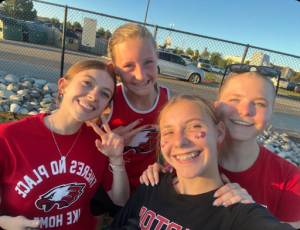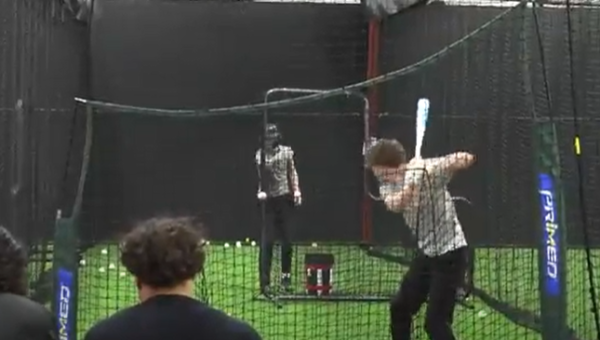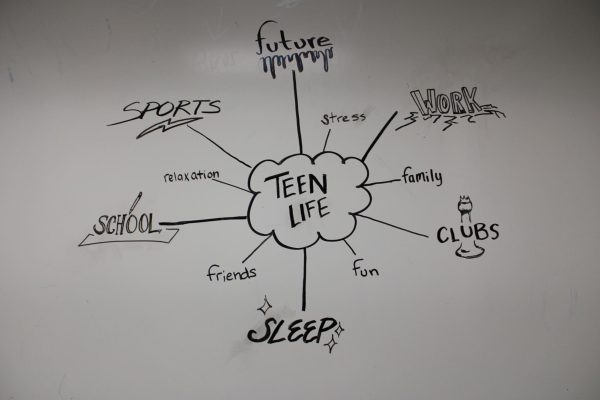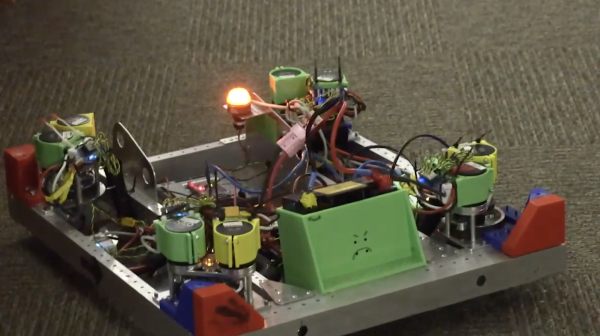Raptor Robotics Engineers Triumph
April 15, 2019
The Eaglecrest Robotics Team Raptacon 3200 has done exceptionally well so far this year. At their second competition, Thursday, March 28th through Sunday, March 31st, in Utah, the Robotics team had the opportunity to compete against a large variety of opponents including teams from Montana, Arizona, and China. The team competed well, scoring in the top twenty and taking home 46th place overall, and can officially call this year a success. As one of the influential members of the team, Alex Brown states his opinion of the competition in Utah, “We did well. I actually believe we did really well. If we had performed as well as we did there, at Denver regionals, I think we would have had a chance at making the top eight and going on to finals.”
Competing in their first competition at the University of Denver on Saturday, March 23rd through Sunday, March 24th, 2019, the EHS robotics team took home 18th place out of 54 opponents, including international teams. The team was also the proud recipient of the Excellence in Engineering Award. Another member of the team, Tyler Hersh, gives his take on the competition in Denver, “ I honestly think we did better at DU than we did in Utah. I think it was just timing. I think that if they were flipped, we could have done better in Utah than we actually did.”
Participating at the University of Denver, the EHS robotics team competed against some teams from Mexico, Idaho, Wyoming, and a bunch of teams from California. Many of these teams had gone to previous regionals before this, and this was the Rapticon 3200’s first competition this year. More insight on the opponents of the Rapticon comes from Corey Kesler, one of the mentors of the team, “A bunch of the teams we competed against were actually at their second regional competition, and this was our first. It was just a chance for us to get some of the kinks worked out.” According to Kesler, many teams only go to two or three competitions a year, and the the Rapticon 3200 still has more to look forward to.
At a competition, the team must first go through a series of qualification rounds. The top eight teams in the qualifying group get to select teammates in a serpentine style draft. From there, you can get into the playoffs by either being one of the top qualifying teams, or by getting drafted by one of them.
After a long, six-week building process, the team sealed their robot in a plastic bag and were not allowed to touch it. They then had to build a second robot to practice with while their initial robot had to be sealed away. Brown elaborates further on what is actually done during the building process, “During those six weeks, we have three school days and Saturdays. During those days, basically everyone who is involved is doing some sort of role.”
Working through a multitude of problems and program changes, the Drive team has spent many hours practicing and perfecting their robot. While the long hours spent practicing are important, nothing compares to the work put into a real competition. Hersh shares his own overall role on the team, and what he did during the building process, “We decide what bot we want to use and we start building off of that. I help with programming. That is just getting the motors to work and then be able to drive it.”
Beginning their year with only a six week build season from January to February, the team worked for around thirty hours per week in order to build, design, and program the Rapticon 3200. They worked together to problem solve, share ideas, and create a strong robot for the competition season.

















